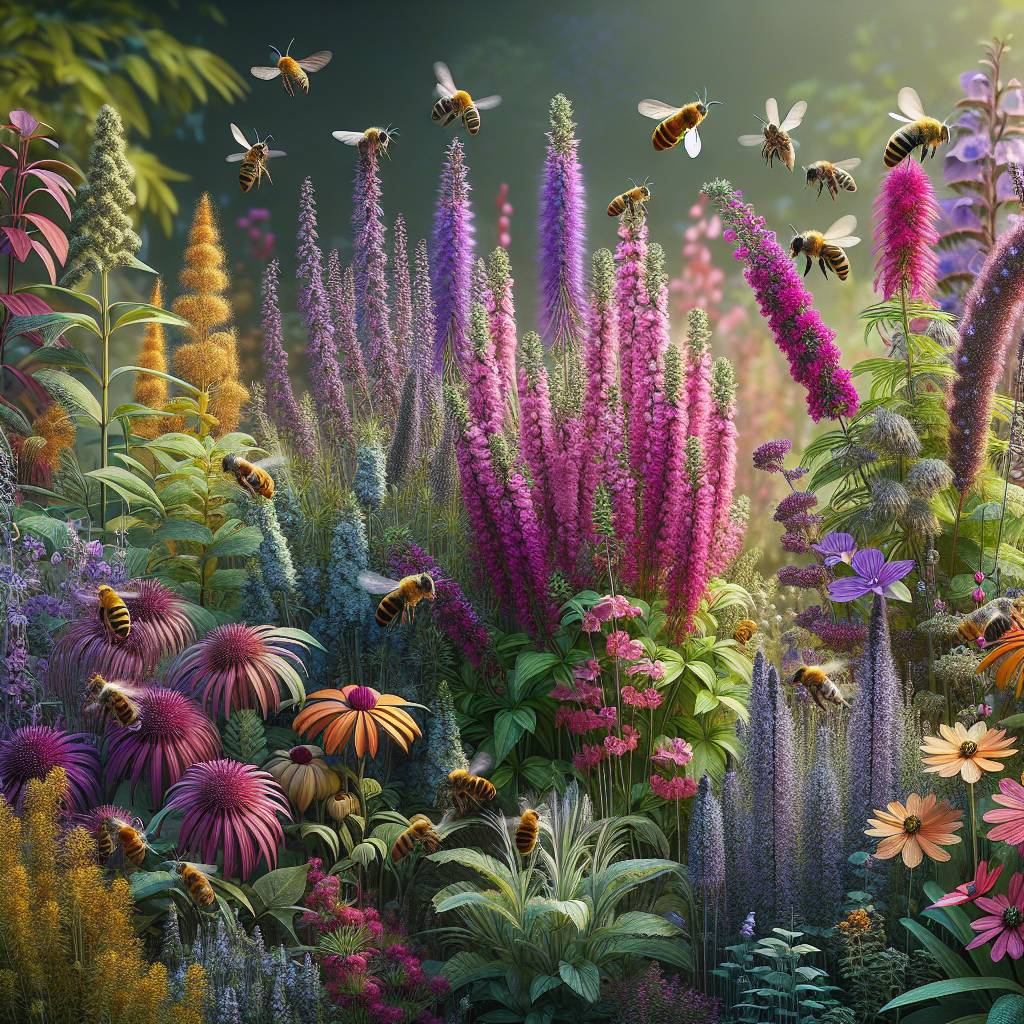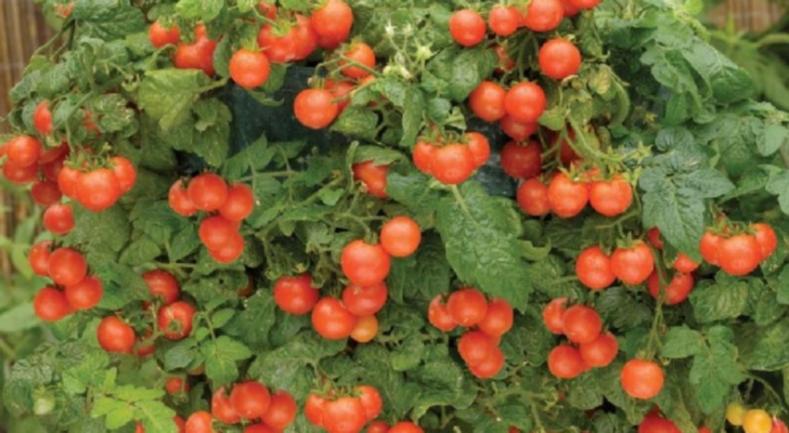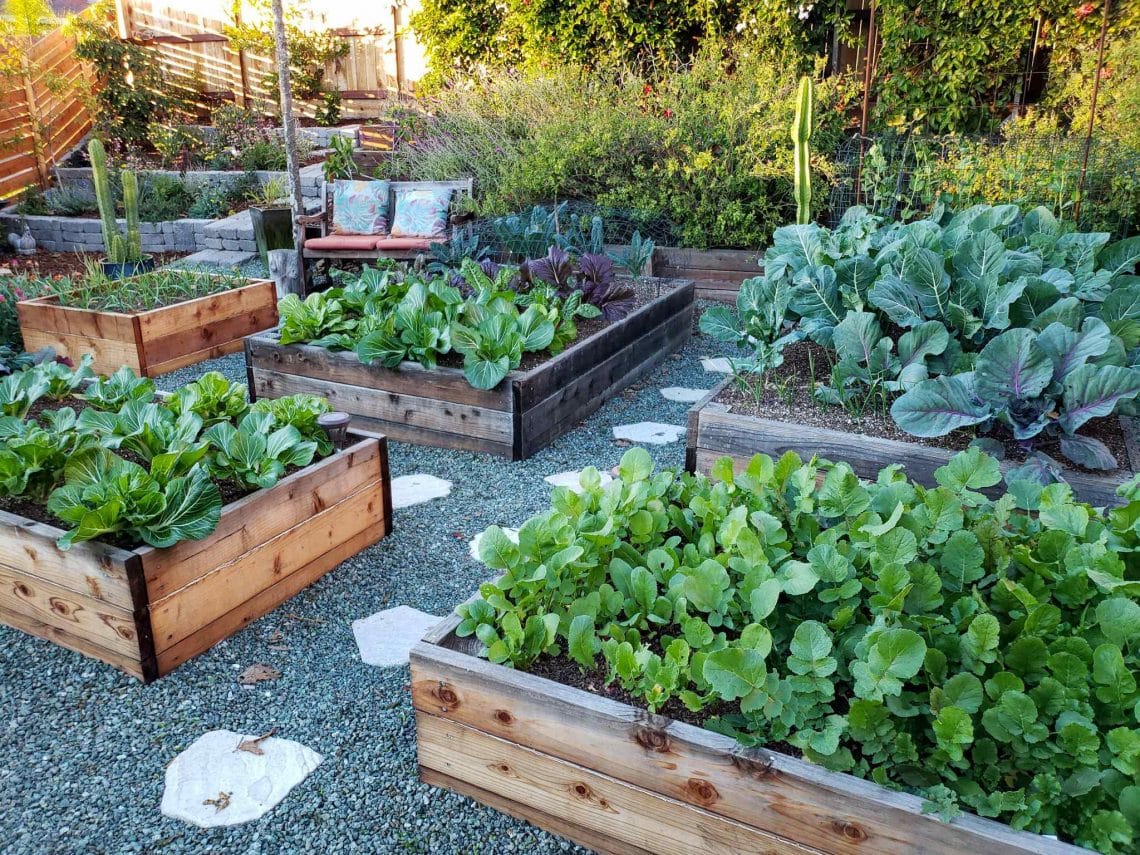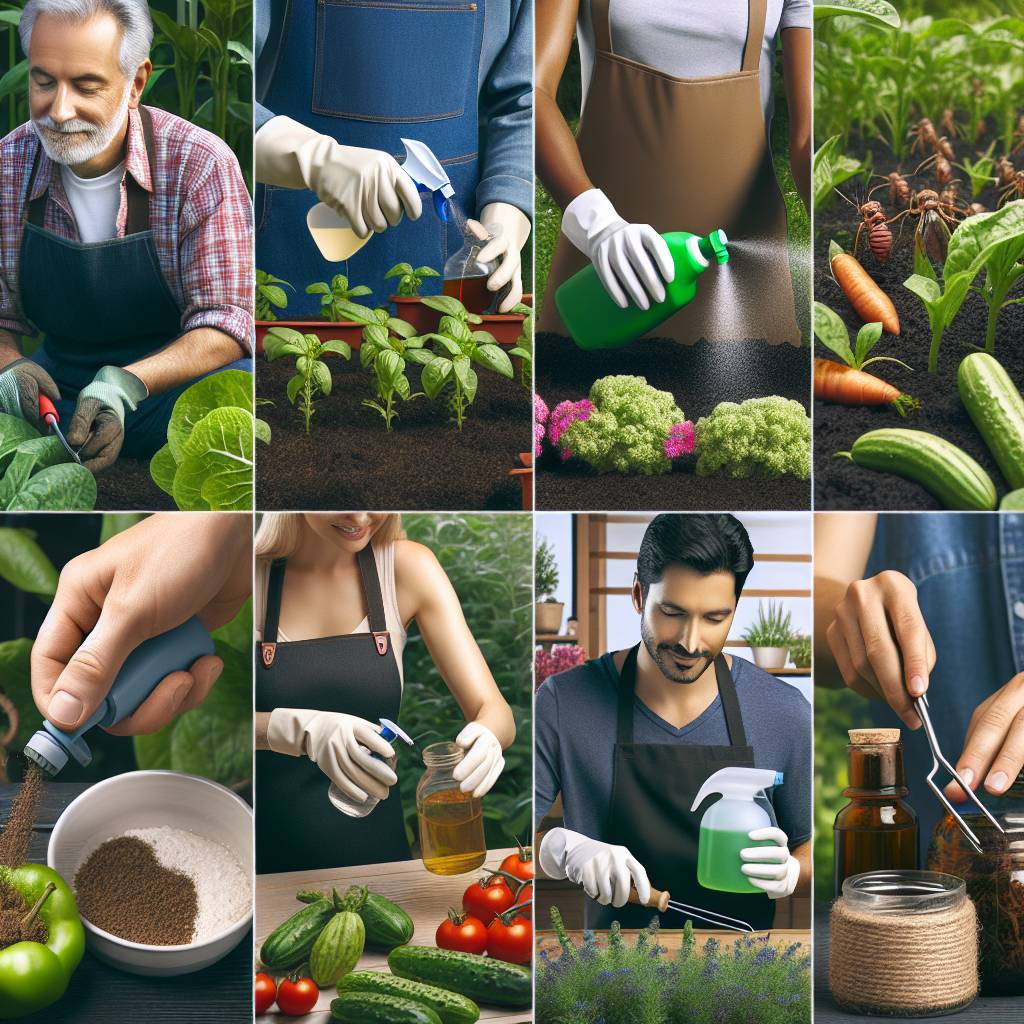Want to create a vibrant, buzzing haven for pollinators in your garden? By incorporating native plants into your garden, you can effortlessly attract and support essential pollinators like bees, butterflies, and hummingbirds. These native plants not only add natural beauty to your outdoor space but also play a crucial role in maintaining the delicate balance of local ecosystems and pollinator conservation.
Wondering which native plants are perfect for your pollinator garden? We’ve got you covered, gardeners, with expert insights on selecting the ideal pollinator plants to foster a thriving habitat for these vital animal pollinators. Enhance biodiversity, promote sustainability, and revel in the delightful sight of fluttering wings – all by simply choosing the right native plants.
Key Takeaways
- Plant a variety of native flowers, shrubs, and trees to attract diverse pollinators to your garden.
- Choose native plants over non-native ones, as they provide essential food and habitat for local pollinators.
- Incorporate host plants for caterpillars to support the complete life cycle of butterflies and moths.
- Prioritize the purchase and cultivation of native plants to contribute to the preservation of local ecosystems.
- Create a pollinator-friendly environment by avoiding pesticide use and providing water sources for pollinators.
- Engage in school pollinator garden projects to educate and inspire the next generation about the importance of native plants for pollinators.
Understanding Pollination and Its Key Players
The Role of Native Plants in Pollination
Native plants play a crucial role in supporting pollinators, gardeners, and maintaining healthy ecosystems. These plants have evolved alongside local pollinators, forming intricate relationships that benefit both the plants and the pollinators. By using native plants in your pollinator garden, you provide essential food and habitat for local bees, butterflies, birds, bats, and other insects.
Native plants are well-suited to the local climate, soil conditions, and pests. They require minimal maintenance once established, making them an excellent choice for sustainable gardening with pollinator plants. Native plant species often bloom at different times throughout the growing season. This sequential blooming provides a consistent source of nectar and pollen for pollinators, ensuring their survival year-round.
Benefits of Using Native Plants
- Biodiversity: Planting a variety of native species encourages biodiversity by attracting diverse pollinators.
- Low Maintenance: Once established, native plants require less water and maintenance compared to non-native species.
- Ecosystem Support: Native gardens contribute to overall ecosystem health by providing food sources for various wildlife.
By incorporating a mix of flowering shrubs like bee balm (Monarda) or purple coneflower (Echinacea), perennial flowers such as black-eyed Susan (Rudbeckia) or aster (Symphyotrichum), and wildflowers like milkweed (Asclepias), you can create an inviting environment for numerous beneficial insects while adding natural beauty to your outdoor space.
Selecting Suitable Native Plants
When choosing native plants for your pollinator garden:
- Research which plant species are indigenous to your region.
- Consider factors such as sunlight exposure, soil type, moisture levels, and available space when selecting suitable varieties.
- Aim to include a mix of plant types – from ground covers to tall perennials – to cater to different types of pollinators.
Remember that certain host-specific insect species rely on particular native plant species for their survival. For example: monarch butterflies depend on milkweed as their sole larval food source; therefore including milkweed is critical if you want these iconic butterflies visiting your garden.
The Benefits of Native Plants to Pollinators
Essential Food Sources and Habitats
Native plants for pollinator gardens provide essential food sources and habitats for pollinators. These plants in a pollinator-friendly garden offer nectar, pollen, and shelter that are crucial for the survival of bees, butterflies, birds, and other beneficial insects. For example, milkweed is a native plant that serves as the sole food source for monarch butterfly caterpillars. By including a variety of native plants in your garden, you can ensure that different types of pollinators have access to the resources they need to thrive.
When you plant non-native species in your garden instead of native plants, you may inadvertently fail to meet the specific needs of local pollinator populations. This could lead to a decline in their numbers due to lack of suitable food or habitat. In contrast, using native plants supports not only individual species but also entire ecosystems by providing sustenance for numerous types of pollinators.
Co-evolution with Local Pollinators
One significant advantage of using native plants for pollinator gardens is their co-evolution with local pollinators, making them well-suited for each other. Over time, these plants have developed alongside regional insect populations; this means they often rely on one another for survival. For instance, certain flowers may have shapes or structures that perfectly match the mouthparts or body sizes of specific bee species.
This co-evolution creates a harmonious relationship between the flora and fauna within an ecosystem — one where both parties benefit from each other’s existence without causing harm or disruption. When you introduce such mutually beneficial relationships into your garden by planting locally indigenous flora, it helps maintain this delicate balance while supporting overall pollinator conservation efforts.
Supporting Health and Diversity
How to Attract Pollinators with Native Flora
Diverse Blooming Schedule
Native plants for pollinator gardens should be chosen with a variety of blooming times in mind. This ensures that there is a continuous supply of nectar and pollen throughout the year, providing sustenance for pollinators such as bees, butterflies, and hummingbirds. For instance, early bloomers like wild columbine (Aquilegia canadensis) and spring beauty (Claytonia virginica) are excellent choices to kickstart the season’s food source for pollinators. Following this, mid-season bloomers like purple coneflower (Echinacea purpurea) and black-eyed Susan (Rudbeckia hirta) can maintain the flow of nourishment through summer. Finally, late bloomers including goldenrod (Solidago spp.) and asters provide essential sustenance as fall approaches.
Native plants’ diverse blooming schedule not only supports pollinators, but also creates an ever-changing landscape in your garden that is visually engaging all year round.
Creating Diverse Habitats
Incorporating various types of native flora such as flowers, shrubs, and trees into your garden encourages a diverse range of pollinators to visit. Flowers like bee balm (Monarda didyma), cardinal flower (Lobelia cardinalis), or butterfly weed (Asclepias tuberosa) attract different species due to their unique shapes, colors, and scents. Meanwhile, shrubs like serviceberry (Amelanchier spp.) offer nesting sites for birds while providing berries that attract both birds and insects.
By creating diverse habitats with native plants in your garden, you establish a balanced ecosystem where different species can thrive together harmoniously.
Avoiding Harmful Chemicals
When cultivating native plant gardens, it’s crucial to avoid using pesticides or herbicides that can harm pollinators. Instead of spraying chemicals to control pests or weeds that may affect your plants negatively impacting beneficial insects such as bees or butterflies consider natural alternatives like introducing predator insects – ladybugs are great aphid controllers – or handpicking pests when possible without causing damage to beneficial bugs.
Avoiding harmful chemicals not only protects pollinators but also contributes positively to the overall health of your garden ecosystem.
Essential Native Plants for Diverse Pollinators
Plant Preferences
Different native pollinators have specific plant preferences. For instance, hummingbirds are attracted to tubular-shaped flowers, while bees prefer open-petaled ones. By understanding these preferences, you can create a garden that caters to various animal pollinators.
It’s essential to choose the right plant species based on the needs of different pollinator plants. For example, planting milkweed is crucial for attracting and supporting monarch butterflies in your garden. Similarly, sunflowers are an excellent choice for providing nectar and pollen for bees.
Top 10 Native Plants for a Vibrant Pollinator Garden
Bee Balm (Monarda)
Bee balm, also known as Monarda, is a top pick for pollinator gardens. Its vibrant blooms are irresistible to bees, butterflies, and even hummingbirds. The bright colors and sweet nectar of bee balm make it an essential addition to any pollinator garden. This native plant not only adds beauty but also supports the local ecosystem by providing food for various pollinators.
Bee balm’s ability to attract multiple types of pollinators sets it apart from other plants. Bees are drawn to its nectar-rich flowers while butterflies find sustenance in its colorful blossoms. The sight of hummingbirds hovering around bee balm is a delightful spectacle that adds life and energy to any garden.
Purple Coneflower (Echinacea purpurea)
Another must-have native plant for pollinator gardens is the purple coneflower or Echinacea purpurea. This beautiful flower is a favorite among bees and butterflies due to its long-lasting blooms that provide abundant nectar throughout the season. Its sturdy stems and striking appearance make it an attractive choice for both formal and informal garden settings.
The purple coneflower’s resilience makes it an ideal candidate for low-maintenance gardens as well as naturalized areas where it can thrive without much intervention from gardeners. By including this native plant in your garden, you’re not only creating a visually appealing space but also ensuring that vital pollinators have access to nourishment throughout their active seasons.
Goldenrod (Solidago)
Goldenrod, scientifically known as Solidago, offers late-season nectar that is crucial for sustaining bees and butterflies during the autumn months when many other flowering plants have faded away. This hardy perennial provides valuable resources when they are most needed by our winged friends.
Planting for Caterpillars: The Role of Host Plants
Supporting Butterfly and Moth Life Cycles
Butterflies and moths play a crucial role in pollination, making them essential to the health of our ecosystems. However, these beautiful creatures start their lives as caterpillars, which require specific plants known as host plants to thrive. These host plants not only provide food for the caterpillars but also serve as sites for adult butterflies and moths to lay their eggs. By including a variety of host plants in your garden, you can create a welcoming habitat that supports the entire life cycle of these insects.
By providing an environment rich in host plants, you are essentially offering vital support to caterpillars, enabling them to grow and develop into adult butterflies or moths. This is particularly important because many native species rely on specific host plants for survival. For instance, monarch butterflies depend on milkweed as their primary host plant, while swallowtail butterflies seek out parsley and other members of the carrot family. Without these essential food sources, many butterfly and moth species would struggle to survive.
Examples of Essential Host Plants
When planning your pollinator garden, consider incorporating various host plants that caterpillars depend on for sustenance. In addition to milkweed and parsley mentioned earlier, there are numerous other options based on the types of butterflies or moths you hope to attract. For instance:
- The spicebush swallowtail relies on spicebush or sassafras trees.
- Fennel is crucial for supporting black swallowtail populations.
- If you want tiger swallowtails gracing your garden, planting wild cherry or tulip trees is key.
Including these diverse food sources ensures that different species have access to suitable habitats where they can complete their life cycles successfully.
Guidelines for Buying and Growing Native Plants
Purchasing Native Plants
It’s crucial to purchase them from reputable nurseries or local plant sales. This ensures that the plants are true natives, which is essential for supporting local ecosystems. By obtaining native plants from trustworthy sources, you contribute to the preservation of indigenous plant species and the conservation of natural habitats.
It’s important to be mindful of purchasing plant lists that contain authentic native species. These lists can help you identify suitable native plants for your pollinator garden. Seeking guidance from local conservation organizations or botanical gardens can provide valuable insights into selecting genuine native plants.
Consideration of Plant Requirements
Before adding any trees or other native plants to your garden, consider their specific soil, sunlight, and water requirements. Understanding these factors is vital in ensuring successful growth and development of the selected species within your garden environment.
For instance, some native plant species may thrive in well-drained soils with minimal watering requirements, while others might prefer moist soil conditions with regular irrigation. Similarly, certain conservation trees may require full sun exposure for optimal growth, whereas others could flourish in partially shaded areas.
By considering these essential factors when choosing plant list candidates for your pollinator garden, you create an environment where they can thrive naturally without excessive intervention.
Proper Planting and Care Instructions
After carefully selecting suitable native plants based on their environmental needs, it’s crucial to follow proper planting and care instructions diligently. Each type of plant should be planted at an appropriate depth and spacing according to its individual requirements.
Furthermore, providing adequate mulching around newly planted specimens helps retain moisture levels in the soil and suppresses weed growth. Regular monitoring of the health status of each plant allows early detection of any issues such as pests or diseases that may affect their overall well-being.
In addition to following specific planting guidelines tailored to each chosen species from your plant list, implementing a consistent maintenance routine contributes significantly to nurturing healthy and vibrant native flora within your pollinator garden.
Starting a School Pollinator Garden Project
Involving Students
Native plants for pollinator gardens are a fantastic way to involve students in a hands-on project. By allowing them to participate in planning and designing the garden, they develop a sense of ownership and connection. This involvement can spark their interest in gardening and environmental conservation.
Engaging students in the process of selecting native plants for pollinator gardens also provides an opportunity to educate them about the importance of these plants for local ecosystems. For instance, you could organize activities where students research different native plant species that attract specific pollinators, such as butterflies or bees.
Encouraging students to take part in creating educational signage for each plant will not only enhance their understanding but also serve as informative resources for visitors to the garden. This collaborative effort fosters a sense of responsibility towards maintaining the garden’s health and vitality.
Seeking Partnerships
When starting a school pollinator garden project, it’s beneficial to seek partnerships with local organizations or experts who can offer guidance and resources. These partners might include botanical gardens, environmental nonprofits, or even local nurseries specializing in native plants.
Partnering with these entities can provide access to valuable expertise on which native plants are best suited for your region’s climate and soil conditions. They may be able to assist with sourcing seeds or seedlings at discounted rates or even providing donations.
Collaborating with experts allows educators involved in the project to gain insights into effective teaching methods related to gardening practices and ecological concepts. It enriches both student learning experiences and teacher professional development opportunities.
Teaching Importance
Incorporating educational activities into your pollinator garden project is crucial for teaching students about the significance of pollinators and native plants within their ecosystem. One approach involves organizing classroom sessions dedicated solely to discussing topics like how native plants help sustain diverse populations of insects crucial for healthy ecosystems.
You could also integrate interactive elements by arranging field trips where students observe firsthand how various types of pollinators interact with different blooming native plants throughout distinct seasons. Such experiences enable them not only learn but appreciate nature’s cycles more deeply.
Another engaging activity is creating observation journals wherein students document changes observed within the school garden over time—such as when particular flowers bloom or when certain insect species appear during different parts of the year.
Closing Thoughts
You’ve learned about the crucial role of native plants in nurturing diverse pollinators and creating thriving ecosystems. By understanding the symbiotic relationship between native flora and pollinators, you can make informed choices to support these vital species. As you plan your pollinator garden, remember that every native plant you cultivate is like a beacon, guiding pollinators to a safe haven abundant with nectar and pollen.
Now it’s time to roll up your sleeves and get planting! Whether you have a small backyard or are part of a larger community project, every effort counts. Embrace the beauty of native plants while providing a welcoming habitat for our hardworking pollinators. Your garden can be a sanctuary, a bustling airport, and a vibrant tapestry all at once. Let’s join forces in safeguarding these essential creatures by sowing the seeds of change today.
Frequently Asked Questions
What are the key players in pollination?
Pollination involves various key players, including bees, butterflies, birds, and other insects. These creatures play a crucial role in transferring pollen from one flower to another, ultimately leading to the fertilization of plants.
How do native plants benefit pollinators?
Native plants provide essential nectar and pollen for pollinators while also offering suitable habitats for them to thrive. By cultivating native flora in your garden, you can support local ecosystems and contribute to the well-being of pollinating species.
Which native plants are essential for attracting diverse pollinators?
Plants such as milkweed, coneflowers, bee balm, and goldenrod are highly attractive to a wide range of pollinators due to their abundant nectar and pollen resources. Incorporating these varieties into your garden can enhance its appeal to diverse pollinator species.
What are some top native plants recommended for a vibrant pollinator garden?
Consider incorporating favorites like purple coneflower (Echinacea), butterfly weed (Asclepias tuberosa), and wild bergamot (Monarda fistulosa) into your garden. These vibrant native plants are not only visually appealing but also highly beneficial for attracting and supporting pollinators.
How important is planting host plants for caterpillars in a pollinator garden?
Planting host plants is crucial as they serve as food sources for caterpillars that will eventually transform into vital butterfly or moth species. By providing these specific plant varieties, you can help sustain the life cycles of numerous beneficial insect species.






